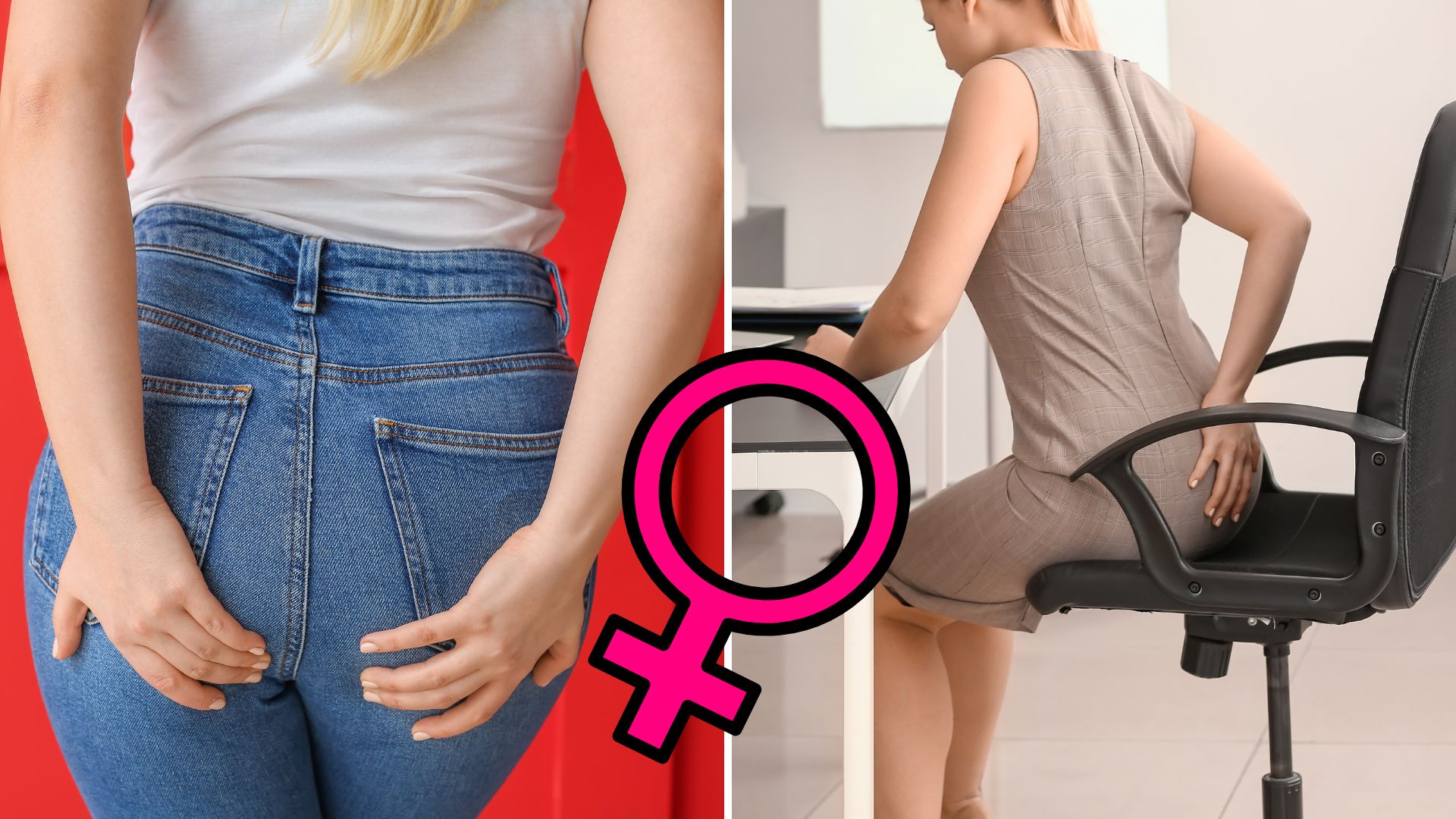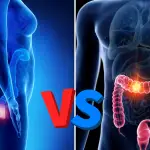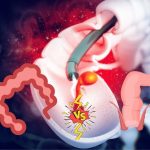Hemorrhoids are quite common ailments, and by the age of 50 it is estimated that about half of adults have had to deal with this annoying problem.
Hemorrhoids symptoms female are not different from the ones that are typical for males. Henorrhoids are vascular structures (which act as cushions) in the anal canal that play an important role in maintaining fecal continence . It is a completely normal anatomical component, however in everyday language those who suffer from it tend to define the pathological situation ( haemorrhoidal disease ) “hemorrhoids” , also making confusion with a series of disorders affecting the anorectal area such as, for example, the fissures, anal itching, etc. In pathological conditions, hemorrhoids are dilated and inflamed.
For simplicity we will use the term “hemorrhoids” to indicate the pathological condition.
Among the causes that can procure the pathological condition may be particular efforts during defecation or increased stress during pregnancy . Hemorrhoids can be located inside the rectum ( internal hemorrhoids ), or they can develop under the skin around the anus ( external hemorrhoids ).
Hemorrhoids symptoms female, which are the main?
Symptoms can include:
- Itching or irritation in the anal area
- Painless bleeding during bowel movement (bright red blood on toilet paper or in the toilet bowl, in small amounts).
- Swelling around the anus
- Pain or discomfort
- Loss of stools
- A sensitive or painful swelling near the anus.
Generally the symptoms of hemorrhoids depend on their location :
Internal hemorrhoids
They are placed inside the rectum and typically do not cause discomfort. However, an effort or even the passage of stool can damage the surface causing bleeding. It is not excluded that an internal hemorrhoid can be pushed outward by excessive exertion ( bulging or prolapsed hemorrhoids ) and this can cause pain or irritation.
External hemorrhoids
They are under the skin surrounding the anus. When they are irritated they can itch or bleed. The formation of a clot (thrombus) resulting in pain, swelling and inflammation is not excluded.
Bleeding is the most common symptom of hemorrhoids. However, rectal bleeding can also be a sign of other diseases such as colorectal cancer and anal cancer. If you have not already had a diagnosis of haemorrhoidal disease, it is advisable to consult your doctor in order to rule out other pathologies.
See an emergency room if you bleed abnormally from the rectum, feel lightheaded or feel dizzy if you have lost consciousness.
Complications
These are rare conditions including:
- Anemia . Chronic blood loss from hemorrhoids can cause anemia, which can cause fatigue and weakness.
- Strangled hemorrhoid . If there is no blood supply, the hemorrhoid can be “strangled,” a condition that can cause extreme pain and lead to tissue death (gangrene).
Causes
Hemorrhoids can develop due to increased pressure in the lower rectum. The increase in pressure can occur in these cases:
- Low-fiber diet
- Pregnancy
- Chronic diarrhea or constipation
- Sitting on the toilet for too long
- Anal intercourse
- Obesity
- Tension during bowel movements
With aging, the risk of Hemorrhoids symptoms female rises due to a weakening of the tissues that support the veins of the rectum and anus.

Diagnosis
The procedures can be as follows:
- Examination of the anal canal and rectum. Doctors perform a digital rectal exam by inserting a gloved, lubricated finger into the rectum. The aim is to identify possible growths.
- Visual inspection of the anal canal and rectum. Sometimes internal hemorrhoids can have a consistency that does not facilitate their detection. The doctor can then examine the lower part of the colon and rectum with an anoscope, proctoscope, or sigmoidoscope.
It is also possible to perform a complete colon examination thanks to a colonoscopy . It is generally used when:
- Symptoms suggest the possibility of another disease related to the digestive system
- There are risk factors for colorectal cancer
- The patient is over 50 years of age and has not had a recent colonoscopy
Treatment
Medicines for hemorrhoids
If the symptoms of hemorrhoids produce mild discomfort, always on the advice of the doctor, you can use over-the-counter products (creams, ointments, suppositories or tablets) that can reduce the discomfort. These are products that contain, for example, witch hazel or hydrocortisone that can relieve pain and itching, at least temporarily.
However, it is best not to use these drugs for more than a week, unless directed by your doctor. They can cause side symptoms such as rashes, inflammation and thinning of the skin.
PREPARATION H Hemorrhoid Symptom Treatment Cream (0.9 Ounce Tube)
Minimally invasive procedures
In the case of painful and swollen external hemorrhoids due to a blood clot, a simple incision made by the doctor can provide quick relief.
In the case of persistent bleeding or painful hemorrhoids, the doctor may resort to other minimally invasive procedures. These are outpatient therapies.
- Elastic ligation: In this case, the doctor places small rubber bands around the base of the internal hemorrhoids, thus depriving them of blood circulation. Usually after a week the detachment of the non-sprayed tissue occurs. This is an effective procedure for many people.
- Injection (sclerotherapy) . In this case, the doctor injects a chemical solution into the hemorrhoids to reduce them. It is generally a less effective treatment than elastic ligation.
- Coagulation techniques . They are performed with infrared, laser or electric scalpel, with bipolar current.These treatments cause fewer side effects, however they are associated with a greater number of relapses, compared to elastic ligation.
Surgical procedures
If the procedures described above have not been successful and if the situation is particularly troublesome, it is possible to resort to surgery. Typically, these are surgeries that can be done on an outpatient basis or that may require a night in the hospital.
- Hemorrhoidectomy , i.e. the removal of hemorrhoids. During the surgery, the surgeon removes the excess tissue that causes the bleeding. The techniques used can be different. The surgery can be performed with a local anesthetic combined with sedation, spinal anesthesia or general anesthesia.
To cure severe or recurrent hemorrhoids, hemorrhoidectomy is the most effective and comprehensive way. Complications can include temporary difficulty emptying the bladder and urinary tract infections associated with this disorder.
After surgery, pain may be felt which can still be relieved by medication. - Stapling . This procedure, called a pinched hemorrhoidectomy, is done for bleeding or prolapse of internal hemorrhoids. Using a special tool, the surgeon blocks the flow of blood to the hemorrhoidal tissue. This technique is less painful than hemorrhoidectomy and allows for faster recovery. Compared to haemorrhoidectomy, the stapling technique has been associated with a higher risk of rectal recurrence and prolapse.
Remedies
It is possible to relieve the mild pain, swelling and inflammation of hemorrhoids with home treatments that often solve the problem. However, consult your doctor.
- Ablutions in warm water . Soak the anal area for 10 minutes two to three times a day.
- Topical treatments . A hemorrhoid cream or suppositories containing hydrocortisone can be applied. Tampons that contain witch hazel or an anesthetic agent may also be used.
- Oral pain relievers . Paracetamol, aspirin or ibuprofen can be used to temporarily reduce discomfort.
- Toilet paper . Do not use dry paper, it is better to moisten it. Wet wipes can also be used, but they must not contain alcohol or perfume.
- Washings . To keep the anal area clean, take a shower (a bath would be better) every day and gently clean the area around the anus. The water should not be too hot and do not use soap which could aggravate the problem. Avoid alcohol-based scented wipes. To dry the area avoiding rubbing, you can use a hairdryer.
- The cold . To relieve swelling, cold compresses can be applied to the anus.
With these remedies, the symptoms of hemorrhoids should disappear within a week. If you are not getting any benefit, or you continue to feel severe pain, or the bleeding is abnormal, you should see your doctor.
Prevention
There is no better way to prevent hemorrhoids from occurring (or reduce symptoms) than to make stool pass easily. For this to happen, the stool must be soft. To maintain this condition it is important to follow these tips:
- Don’t hold back the stool . It is important to evacuate as soon as you feel the urge. Procrastination could make the stool drier, thus complicating the passage.
- Exercise . It is necessary to be active, exercise prevents constipation and reduces venous pressure. Conditions that can occur after long periods of standing or sitting. In addition, physical activity helps fight obesity, one of the possible causes of hemorrhoids.
- Don’t sit too much . Especially on the toilet.
- Fibers in nutrition. It is important to eat foods rich in fiber, therefore fruits, vegetables and whole grains. They are foods that soften the stool and increase the mass, two characteristics that facilitate defecation. If you have problems with intestinal gas, you can gradually add fiber to your diet.
- Always hydrated . So, drink plenty of fluids. To keep stool soft, drink six to eight glasses of water per day (or other non-alcoholic liquids).
- Fiber supplements . If you do not take the recommended daily amount of fiber (25 grams per day for women and 38 grams per day for men) you can use supplements. However, it is a good idea to keep in mind the importance of staying hydrated by drinking at least eight glasses of water a day, otherwise the use of supplements can worsen the situation by causing constipation or constipation.






